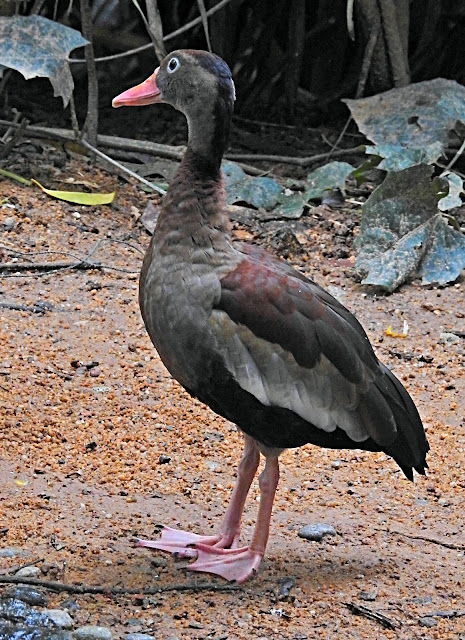The black-bellied whistling duck is sometimes described as part goose and part duck, because of its rather peculiar physical features and behaviors. Like many goose species, black-bellied whistling ducks graze on grasses in upland areas, but they also nest in tree cavities similar to wood ducks. This species is highly gregarious, adaptable to using urban areas and highly recognizable due to its pink bill and legs.
Black-bellied whistling-ducks have an overall dark body, contrasting with their bright pink bill and legs. The breast is a chestnut brown and the belly is black. Male and female are similar in appearance. Young birds are duller in appearance and lack the pink bill.
Black-bellied whistling ducks inhabit freshwater swamps, marshes and costal lagoons. They favor habitat with dense vegetation and surrounded by tree thickets, partially due to their nests usually being built in tree cavities. This helped to earn them the nickname tree ducks. The species has become well adapted to feeding in agricultural fields and, as a result, large flocks can be seen foraging in pastures and open fields. Although specific management activities for whistling ducks on national wildlife refuges are currently limited, these cavity-nesting ducks will readily use wood duck boxes after they are done nesting. Artificial nesting boxes probably have a substantial benefit for this species in the northern portion of their range.
